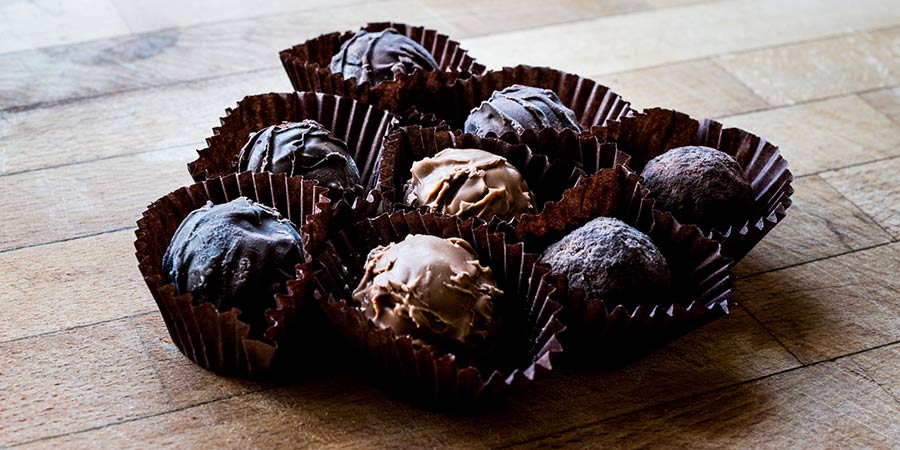From fine handmade artisan chocolates to a nostalgic bar of your favourite corner-shop chocolate brand, there is no doubt about chocolate's place in the culinary world. And, if there was ever a reason to indulge in an abundance of the delicious confection, it's Saturday 7th July - World Chocolate Day.
In celebration, we're taking a journey through the fascinating history of chocolate worldwide, from the traditional practices of ancient civilisations of Mexico and Central America to the modern-day chocolate connoisseurs of Belgium and Switzerland…
Early history of chocolate
The rich history of chocolate can be traced back to the pre-Columbian societies of Mesoamerica when ancient civilisations such as the Mayans, Incas and Aztecs were among the first to discover the delights of chocolate. In its earliest incarnation, chocolate was consumed in liquid form; after undergoing a fermentation process, cacao pods were dried and roasted, then ground into a paste. In order to make the bitter paste more palatable it was combined with water, along with various flavourings - often whatever was to hand, such as honey or chillies. The resulting drink was thick, frothy and bitter - a far cry from the sweet hot chocolate beverage of today. Still, it was held in extremely high esteem, referred to by the Mayans as the "food of the gods", used in important religious rituals and ceremonies, and even used as currency.
Chocolate around the world
Chocolate remained unknown to Europeans until the 16th century when Christopher Columbus famously sailed to the Americas. Among the culinary treasures that accompanied him back to Europe was the humble cocoa bean. Columbus first introduced chocolate to Spain, where its popularity grew at first slowly, then, after the Spanish conquest of the Aztecs, exponentially. Chocolate remained somewhat of a Spanish secret for years, revered as a health drink as a result of its seemingly medicinal properties, until it made its first appearance in England in the mid-1600's.
The first UK chocolate house opened in London in 1657, accompanied by an advertisement announcing the introduction of "an excellent West India drink called chocolate". Early chocolate houses functioned in a manner not dissimilar to pubs - a place for men to gather, gamble and talk politics. Chocolate continued to thrive throughout the 17th and 18th centuries, until 1815 when it underwent its next change. Coenraad Johannes van Houten, a Dutch chemist and chocolate maker began using alkaline salts in his chocolate, dramatically reducing its bitterness. His next move, in 1828, was to create the cocoa press, a machine which separated cocoa solids from cocoa butter, paving the way for the creation of solid chocolate. Soon after, in 1876, a Swiss candle maker turned chocolatier named Daniel Peter invented the first incarnation of milk chocolate. Working with Henri Nestlé, a local baby-food manufacturer, Peter perfected the art of adding powdered milk to chocolate. The two merged in 1879, and the famous Nestlé Company was born.
Here in the UK, Joseph Storrs Fry, from Bristol, was credited with producing the world's first solid chocolate bar, which was made by adding melted cocoa butter back to cocoa powder. Fry's company, J. S. Fry & Sons are most famous for creating the first ever mass produced chocolate bar, Fry's Chocolate Cream, a dairy-free, vegan fondant chocolate bar which was launched in 1886 and is still sold in shops today.
Chocolate today
Today, chocolate is the world's favourite sweet treat, available in a myriad of forms and flavours. People around the world today consume more than 3 million tonnes of cocoa beans each year - in Britain alone, we are said to eat an average of 11kg per person per year. So, there's no denying chocolate is more popular than ever, but where makes the best? There are two countries that immediately come to mind when pondering the question of the best chocolate worldwide; Belgium and Switzerland.
Belgium is often referred to as the "capital of chocolate". Its chocolate history dates back to the 17th century, but it was put firmly on the chocolate map with the invention of praline in 1912. Belgian chocolate is a major industry, forming a strong part of Belgium's history, culture and economy, and with over 2,000 chocolatiers in the country, it's little surprise that Belgium produces what is considered some of the best chocolate worldwide.
As the land where milk chocolate was invented, Switzerland boasts a similar reputation for high-quality chocolate. Cailler was founded in 1819 and is one of Switzerland's oldest and most adored chocolate brands. The Cailler Nestlé factory in Broc, near Lake Geneva, is one of the country's oldest and most important chocolate factories, and can still be visited today. The factory was a great commercial success and many other chocolate makers followed suit, resulting in a thriving chocolate industry in Switzerland. Like Belgium, the country produces some of the best-loved chocolate in the world, laying claim to brands including Lindt, Milka and Toblerone, famously inspired by the mighty Matterhorn in the Swiss Alps.
Whether you favour rich Belgian praline, luxurious Swiss milk chocolate, or perhaps a retro bar of Fry's Chocolate Cream, we wish you a very happy and indulgent World Chocolate Day!






